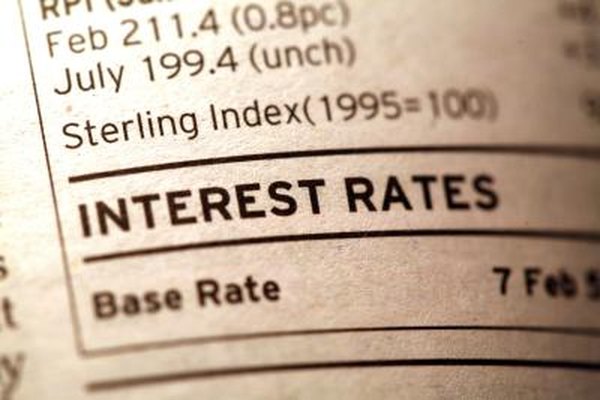What Are the Positive & Negative Effects of a Future Value Investment?
Interest rate provides the compounding factor for a future value investment
Jupiterimages/Photos.com/Getty Images
Businesses use future value investment in many aspects of finance; from savings in bank accounts to company bonds or government bonds. Those who choose to defer purchases today can store up their cash reserves in savings or bonds to make a higher return on their investment. Yet there are always advantages and disadvantages to future value investment.
Interest Payments
Investors receive interest payments for buying bonds, called coupons, that are equal to the interest rate on the bond. For example, if the coupon rate is 10 percent on a $10,000 bond, the investor will receive $1000 every year till the terms expire, at which point the $10,000 would be paid back to the investor. On a whole, this would ensure a higher nominal return. At the end of the first year, his investment will be worth $11,000 rather than the previous $10,000.
Compounding Impact
Businesses apply compounding to financial products to attract investors. It allows interest payments or earnings to be reinvested at the same rate to generate more future earnings. For example, if $10,000 was put into a savings account that generates 10 percent interest, the $1000 payment received at the end of the year could be reinvested in the second year. If compounding occurs twice a year instead of just at the end of the year, the rate of growth in the saving account will be even faster
Inflation Effects
On the negative side, inflation affects future value investments. If prices are rising, people take home less at the end. Similarly, the $1000 coupon payment investors receive today will not have the same purchasing power as the $1000 coupon payment received in the 10th year of a long term loan; it will only buy fewer goods. In effect, the coupon value would be considerably lower.
Currency Exposure
Inflation is not the only risk that investors run up against. In fact, some government bonds have interest rates that adjust for inflation, making sure the investor receives the same coupon payment. However, investors also run up against a currency risk. If the value of the dollar falls against the Euro, for example, European investors who bought U.S. bonds priced in dollars would receive a lower coupon value.
References
Writer Bio
Victor Rogers is a professional business writer who started his career as a financial analyst on Wall Street. He later expanded his experience to content marketing for technology firms in New York City. Victor is an alumnus of St. Lawrence University, where he graduated with honors in economics and mathematics.

